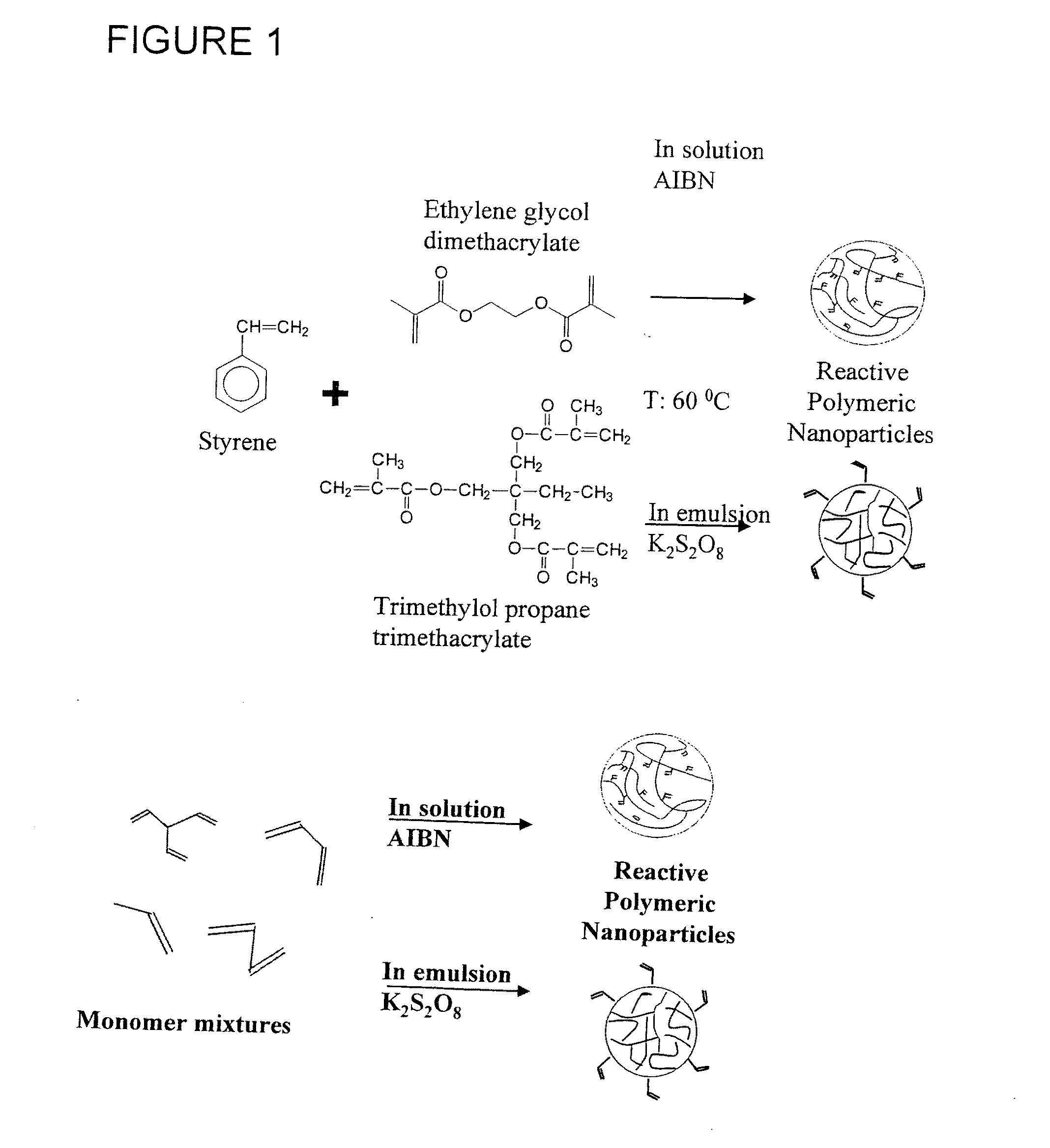Reactive polymeric nanoparticles (RPNPS) for restoration materials in dentistry
a technology of reactive polymer nanoparticles and restoration materials, applied in dentistry, dental prosthetics, impression caps, etc., can solve the problems of amalgams containing mercury being under fire, other problems in the use of materials used in direct dental restorations, and many of these more aesthetic materials are not as strong as the more traditional materials
- Summary
- Abstract
- Description
- Claims
- Application Information
AI Technical Summary
Benefits of technology
Problems solved by technology
Method used
Image
Examples
example 1
Preparation of ST-EGDMA and ST-TMPTMA Reactive Polymeric Nanoparticles
[0072]Reactive polymeric nanoparticles (ST-EGDMA; Type-1) and (ST-TMPTMA; Type-2) was prepared by free radical non-linear precipitated copolymerization in emulsion (at Type-2) and homogenous solution (at Type-1). The monomer ratio in feed was from 1 / 9 to 9 / 1. The hydrophobic copolymers were formed as follows: 100-ml, tree necked, round bottom flask was equipped with paddle stirrer, thermometer, nitrogen inlet and reflux condenser under a nitrogen atmosphere. At preparation of Type-2 the emulsifier was sodium dodecyl sulphate, initiator was potassium peroxide. Azoisobutironitrile (AIBN) as initiator was used in preparation of nanoparticles in homogenous solution (toluene).
[0073]In emulsion: amount of monomers were 2.50 gram, which was added to the continuous phase (distilled water) consisting of emulsifier 0.6 grams, initiator 0.1 mol %. The emulsion was stabilized by ultasonication for 10 min.
[0074]In homogenous s...
example 2
Preparation of MMA / EGDMA and MMA / TMPTMA Reactive Polymeric Nanoparticles
[0076]The copolymers were prepared alike to the Example 1.
example 3
Preparation of MMA / EGDMA / HDDA and MMA / TMPTMA / HDDA Reactive Polymeric Nanoparticles
[0077]The copolymers were prepared alike to the Example 1.
PUM
| Property | Measurement | Unit |
|---|---|---|
| weight percent | aaaaa | aaaaa |
| wavelength range | aaaaa | aaaaa |
| volume shrinkage | aaaaa | aaaaa |
Abstract
Description
Claims
Application Information
 Login to View More
Login to View More - R&D
- Intellectual Property
- Life Sciences
- Materials
- Tech Scout
- Unparalleled Data Quality
- Higher Quality Content
- 60% Fewer Hallucinations
Browse by: Latest US Patents, China's latest patents, Technical Efficacy Thesaurus, Application Domain, Technology Topic, Popular Technical Reports.
© 2025 PatSnap. All rights reserved.Legal|Privacy policy|Modern Slavery Act Transparency Statement|Sitemap|About US| Contact US: help@patsnap.com



